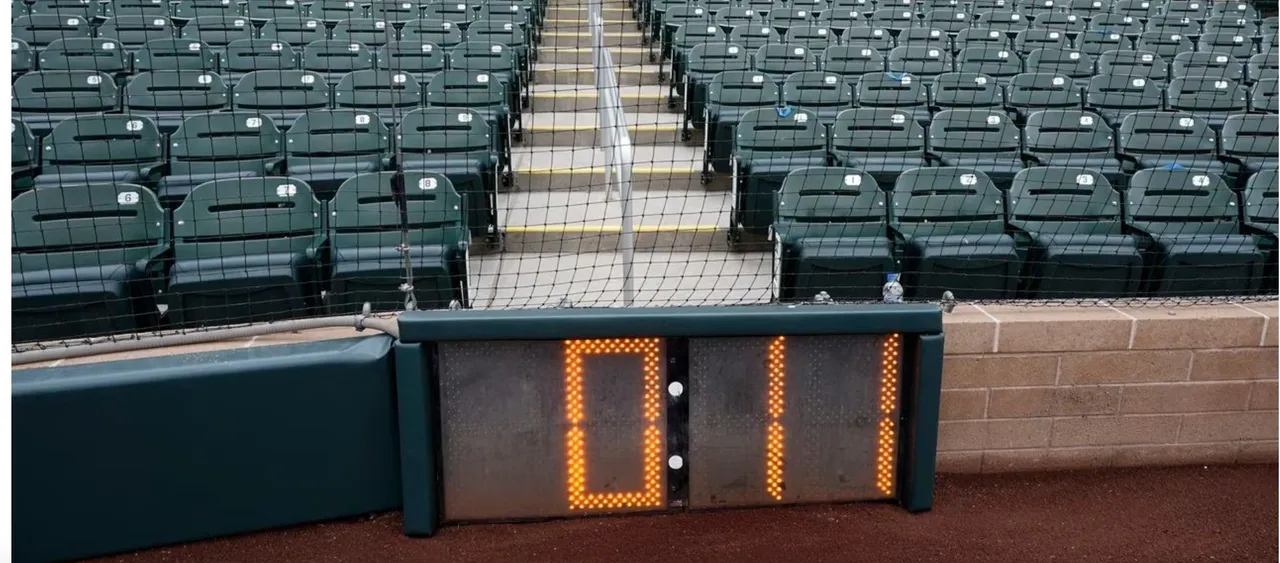Major League Baseball’s 2023 season is shaping up to be one of the most interesting yet, with several rule changes implemented to shake things up. Perhaps the most significant of these changes is the pitch clock, which is causing quite a stir among baseball fans and experts alike. This clock will be used on every single pitch in the game, starting on MLB Opening Day this Thursday.
The pitch clock is a 15-second timer with the bases empty and a 20-second timer with a runner on base. The clock starts when the pitcher catches the ball from the catcher and runs until the pitcher starts his delivery, not when he releases the ball. If the batter is not in the box and ready to hit by the eight-second mark, they will be charged with an automatic strike. Violations by the pitcher will result in an automatic ball, while violations by the hitter will result in an automatic strike.
One timeout per plate appearance will be given to the hitter, while the pitcher gets two “disengagements” per batter. A disengagement is either stepping off or a pickoff attempt. If a pitcher attempts a third disengagement, it will result in a balk. The disengagement count resets if a runner advances, such as with a stolen base, balk, wild pitch or passed ball.
While the implementation of the pitch clock may seem controversial, it is being done with the goal of cutting out downtime where a pitcher is just holding the ball for long stretches of time or a batter stands outside the batter’s box for upwards of 20-30 seconds. This will not only create a quicker pace of play but also increase the amount of action fans get to see during the game.
One of the reasons for the pitch clock is to cut down on the time watching players doing nothing at all without cutting out any of the actual baseball. Even if the time of game isn’t decreased significantly, we’ll presumably be watching a lot more action instead of inaction. This is something that Commissioner Rob Manfred has been advocating for some time now.
The three highest seasons in MLB history in average time of a game played were 2019, 2020 and 2021 (the leader at 3:10). While 2022 saw a drop to 3:03, it’s still the fifth-longest in league history (2017 was fourth). We saw a drastic cut in the time of the game during spring training action (games were averaging two hours and 36 minutes in mid-March), though it’ll increase some in the regular season once there are full commercial breaks.
In September 2022, Major League Baseball announced three rule changes that were approved by the league’s Competition Committee. The rules were adopted after extensive testing at the Minor League level over several years and with feedback from MLB player and umpire representatives.
Overall, the implementation of the pitch clock is a big change for Major League Baseball, and there will likely be growing pains early in the regular season. However, it is a change that is being made with the best interest of the sport in mind. The hope is that the pitch clock will help create a quicker pace of play, increase the amount of action on the field, and make the game more exciting for fans. It’ll be interesting to see how it all plays out on MLB Opening Day this Thursday.


